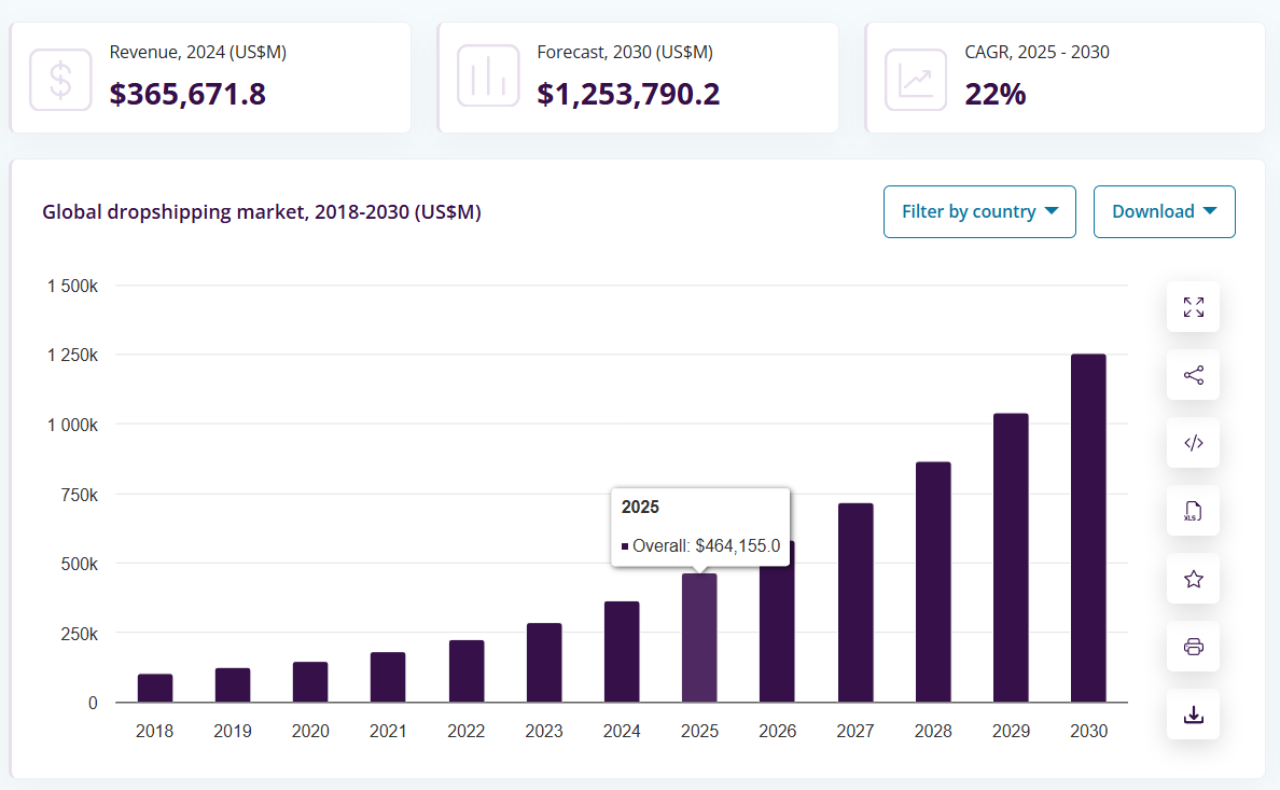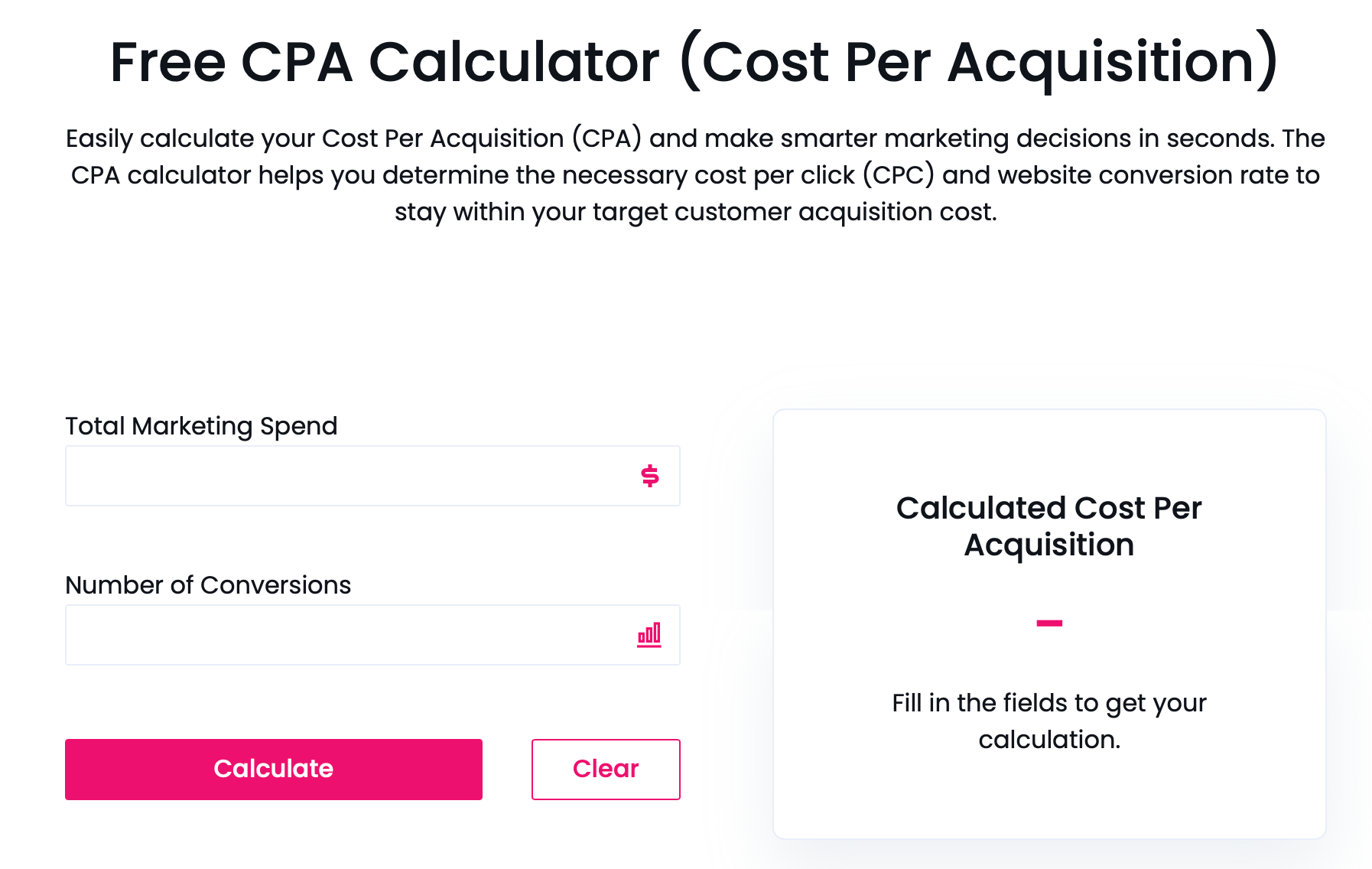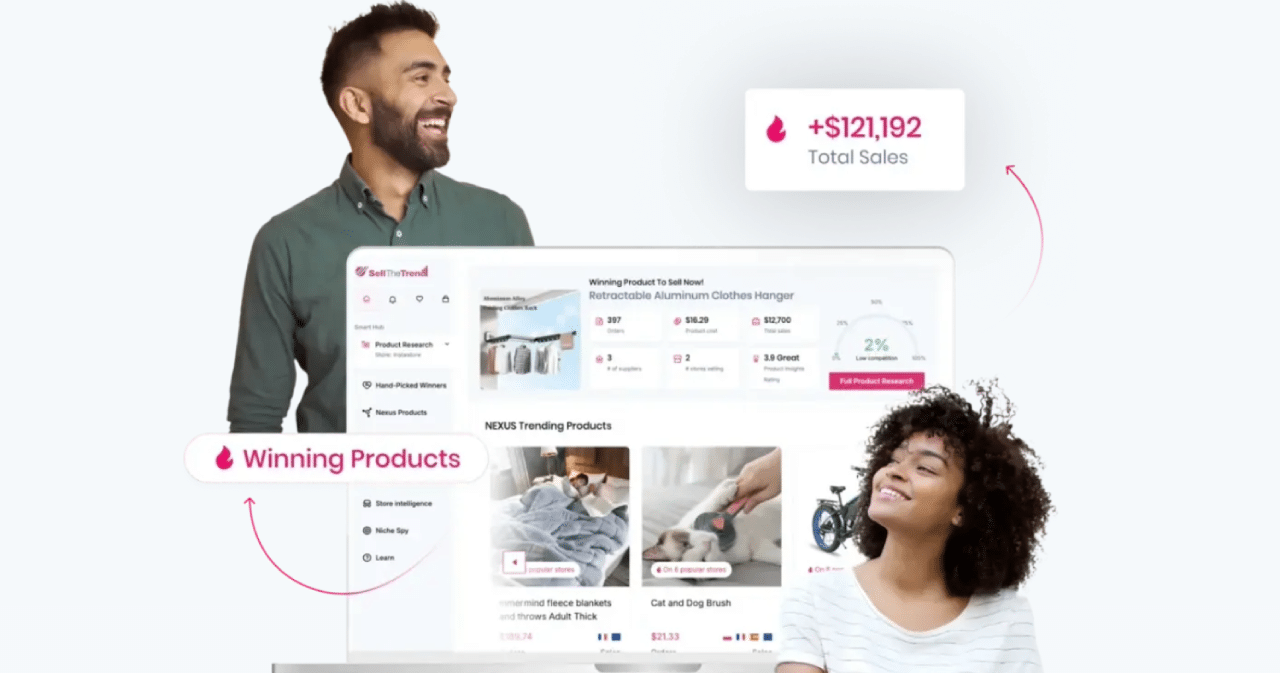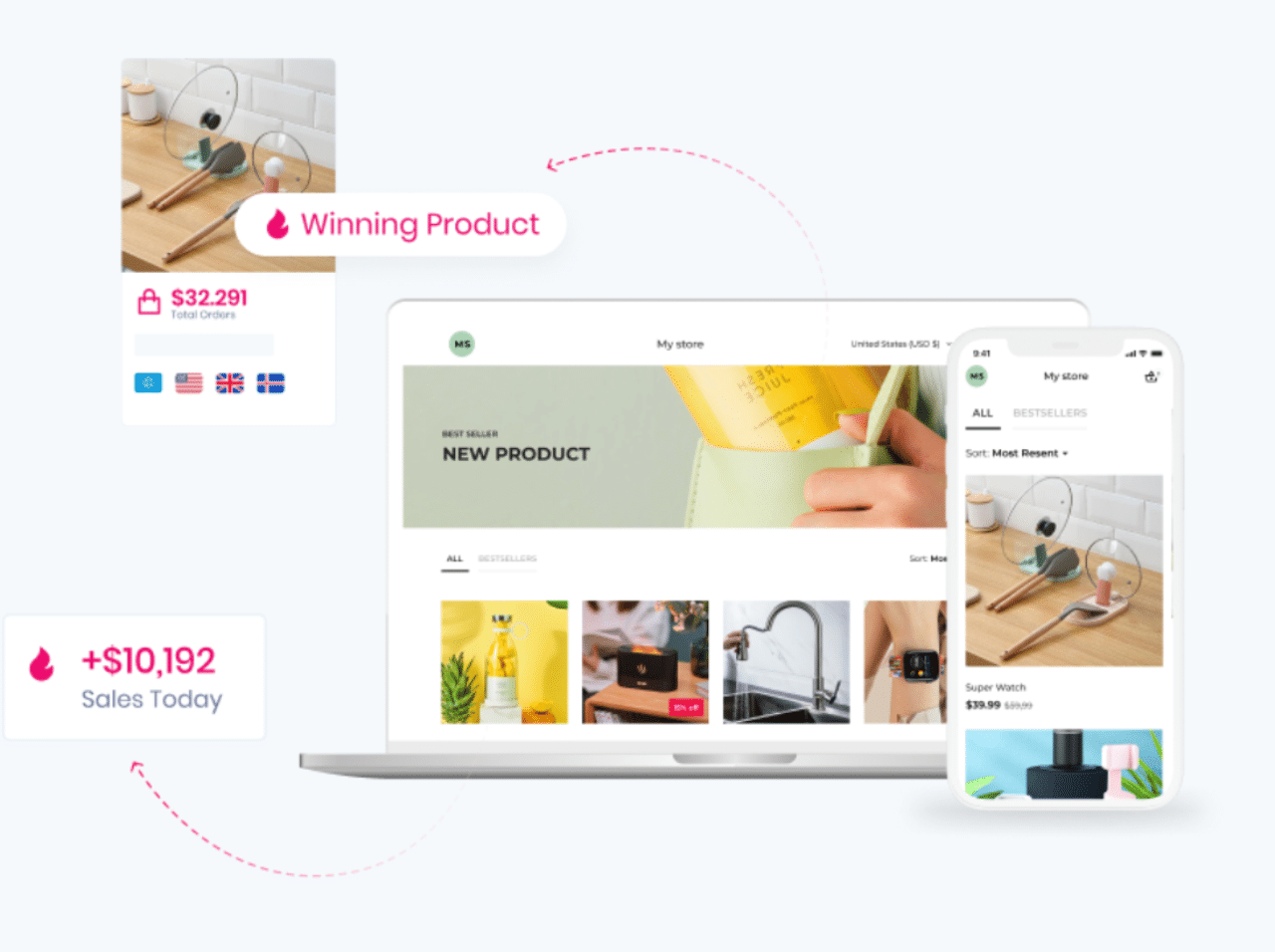Dropshipping Salary: How Much Can You Realistically Make in 2025?
Contents

Dropshipping sounds simple: set up a store, sell products, and make money without holding inventory. But when it comes to income, things aren’t always that clear.
So what does a typical dropshipping salary look like in 2025? Can you make a living from it — or is it just side hustle money at best?
In this guide, we’ll look at what real dropshippers are earning, what factors affect your income, and what you should expect if you’re starting now.
Key Takeaways
- Dropshipping income varies by experience level, but most beginners earn under $1,000/month, while high-ticket dropshipping stores have much higher income potential with stronger profit margins.
- Choosing the right product and pricing it correctly is crucial. Strategies like penetration pricing and economy pricing work well when launching new offers in a competitive market.
- Managing your shipping process and supplier reliability is just as important as running ads. Poor fulfillment kills conversions and repeat customer potential.
- Sell The Trend helps you find profitable products, estimate breakeven ROAS with its built-in profit calculator, and monitor digital store trends in real time.
- Scaling successfully means using data to guide decisions. Tools that show market trends, real-time product performance, and margin estimates help sellers grow without guesswork.
Dropshipping ≠ Salary: Understanding the Difference
When people search “Is dropshipping profitable in 2025?” — they often expect a simple answer. But it’s not that simple. That’s because most people confuse revenue with profit.
Let’s break it down.
If someone says they made $10,000 last month from dropshipping, that’s revenue — the total money from orders. But that doesn’t mean they kept $10,000.
From that amount, you have to subtract:
- Product costs (what you paid suppliers)
- Ad spend (Meta, TikTok, Google, etc.)
- Platform fees (like Shopify or transaction costs)
- Refunds and chargebacks
What’s left is your net profit. That’s your real dropshipping salary — and for most sellers, it’s much lower than what screenshots show.
To avoid these early mistakes, you can use our built-in Profit Calculator inside Sell The Trend. Just enter your product cost, shipping fees, selling price, and an estimated ad spend (CPA).

Instantly, you’ll see your actual profit per sale, your ROI, and whether the product is worth testing. It’s a simple but powerful way to avoid low-margin traps before you waste time or money.
So, is dropshipping profitable in 2025? Yes — but only if you understand your numbers and use the right tools to protect your margins from day one.
What Influences Your Dropshipping Income
Your dropshipping income doesn’t come from luck. It depends on a few key things — and you can control most of them.
1. Your Product Niche
Some niches make more money than others. High-demand, low-competition products usually earn better. For example, phone cases are popular — but the competition is huge. A unique or trending niche will give you better results.
2. Pricing Strategy
If your product costs $10 and you sell it for $15, you only make $5 — and that’s before ad and shipping costs. That’s not enough. Good sellers price products with high margins. That means at least 2x or 3x the product cost.
3. Average Order Value (AOV)
If someone buys just one item for $20, that’s your AOV. But if you use bundles, upsells, or free shipping limits, you can raise that number. A higher AOV means more profit with the same ad cost.
4. Conversion Rate
This is how many people buy after visiting your store. A good rate is around 2–3%. If yours is lower, it may be your product page, price, or trust factors (like reviews or slow shipping).
How Sell The Trend Helps You Earn More

Top sellers don’t guess. They use tools to work smarter — not harder. One of the most popular tools for this is Sell The Trend.
Here’s how it can boost your dropshipping income:
- Find winning products fast: Sell The Trend shows you trending items across thousands of stores. You don’t need to scroll TikTok or guess what’s hot — the data is already there.
- Track real market trends: You can see how fast a product is rising, what kind of stores are selling it, and how long it’s been profitable. That way, you jump on trends early — not when they’re saturated.
- Spy on live stores: Want to know what your competitors are doing? Sell The Trend lets you view top-performing Shopify stores, including what products they’re selling, how they price, and how they present their offers.
- Connect with suppliers instantly: Found a winning product? You can link directly with suppliers through the platform. No more copy-pasting into AliExpress or hoping for a good deal.
- Analyze profit potential: The tool includes price/margin breakdowns so you know your expected profit before you even launch. This helps you focus only on products that meet your goals.
Realistic Earnings for Dropshippers in 2025
Here’s a quick breakdown by experience level:
| Experience Level | Timeline | Estimated Monthly Profit | What It Looks Like |
|---|---|---|---|
| Beginner | 0–3 months | $0 – $1,000 | Testing products, learning ads, slow or no profit. Break-even or small early wins. |
| Intermediate Seller | 3–12 months | $500 – $5,000 | One or more winning products, scaling ads, better margins, steady growth. |
| Advanced Seller | 12+ months | $10,000 – $50,000+ | Multiple stores, high ad volume, automation, strong systems, and real profit scaling. |
So, how much do dropshippers make in 2025?
The answer depends on experience, strategy, and how well you manage your store. Here’s what the data shows.
Beginners (0–3 Months): $0–$1,000/month
This is the learning phase. Most people spend time testing products, setting up ads, and figuring out what works. Some break even. Some lose money. A few may see small profits.
Platforms like DSers and Zendrop show that many beginners make under $1,000/month in profit early on — and that’s normal. It takes time to learn product research, ad targeting, and how to turn visitors into buyers.
Intermediate Sellers (3–12 Months): $500–$5,000/month
This is where most active dropshippers land. You’ve found a winning product or two. You understand your ad platform. Margins are better. Ads are more efficient. And you’re starting to scale.
According to AutoDS, consistent sellers in this range build up to $2K- $5K/month net profit, especially if they manage ad spend and keep returns low.
Advanced Sellers: $10,000–$50,000+ Profit/Month
These are experienced dropshippers who run multiple stores or high-volume ads.
They use automation, run scaling campaigns, and constantly test new offers.
AutoDS reports that top sellers can earn well over $50K/month in revenue, with $10K–$50K+ in net profit depending on margins. TrueProfit users in this tier use profit tracking tools daily to monitor spend and scale smart.
Why Dropshipping Income Fluctuates (And How to Stabilize)
Even successful dropshippers don’t make the same income every month.
Some months are strong.
Others drop hard. Let’s break down why that happens — and what you can do about it.
1. Product Saturation
A product that sells well today might stop selling next month.
Why? Because other sellers copy it fast. Soon, 500 stores will be selling the same item.
Prices drop, ads cost more, and conversions fall. That’s called saturation — and it kills profit.
How to fix it: Keep testing new products. Use Sell The Trend to track trends in real time, and get ahead of the curve before the market floods.
2. Ad Costs Change
Platforms like Meta (Facebook), TikTok, and Google change constantly.
One day, your ad gets $0.50 clicks. Next week, it’s $1.50 or more.
If your margins are tight, that’s the difference between profit and loss.
How to fix it:
- Track your cost per acquisition (CPA) daily
- Turn off underperforming ads fast
- Use retargeting and upsells to boost your return per customer
AutoDS and TrueProfit help track ad performance and profit in real time.
3. Shipping Delays & Supplier Issues
A late shipment can ruin your store’s reviews, increase refunds, and hurt repeat business.
If your supplier runs out of stock or raises prices, you lose control.
Even small delays can cost you customers — especially during holidays or viral campaigns.
How to fix it:
- Work with reliable suppliers only
- Use platforms like DSers or Sell The Trend to find better sources
- Communicate shipping times clearly on your product pages
4. Refunds, Chargebacks & Bad Reviews
High returns = lost revenue. Chargebacks = extra fees. Bad reviews = fewer conversions.
And all three often hit after a viral product sells big — not before.
How to fix it:
- Choose products with low return rates
- Write clear, honest descriptions
- Add trust signals (like reviews, guarantees, support contact)
5. Over-Reliance on One Product or Ad Channel
If all your income comes from one product or one ad set, you’re one algorithm change away from $0. It happens all the time.
How to fix it:
- Test new products weekly
- Use Sell The Trend’s live store insights to find what’s working across other shops
- Build email lists or retargeting audiences so you’re not 100% ad-dependent
4 Strategies to Increase Your Dropshipping Salary in 2025
Each one focuses on real, actionable steps that affect actual profit — not just revenue — with tools naturally included.
1. Focus on High-Margin Products
One of the easiest ways to increase your dropshipping salary is by selling high-margin products. Many beginners get stuck selling cheap items with only $3–$5 profit per sale. But to grow your income, you need bigger margins — ideally, products that give you $15–$50 net profit per order.
This doesn’t mean selling only expensive items. It means finding products that have a high perceived value, low shipping cost, and low product cost relative to price. For example, a posture corrector that costs $7 and sells for $29 has better profit potential than a $10 gadget that sells for $15.
You also reduce risk. If ad costs go up slightly, your margin gives you breathing room. If returns happen, you still have a profit buffer. Tools like Sell The Trend can help you filter products by cost, pricing trends, and shipping speed. It also shows what similar stores are selling successfully — helping you spot opportunities fast.
Avoid low-margin traps like underpriced electronics or trending products with massive competition. Always do the math before launching a product.
Use profit calculators like TrueProfit to see how much you make after ad spend, shipping, and transaction fees.
In short: More margin = more freedom. It lets you invest more in ads, absorb losses, and grow your salary in a safer way.
2. Optimize Your Ad Strategy for Better ROI
Advertising is where most dropshippers spend the bulk of their money. But it’s also where most of their profit disappears. If you want to raise your dropshipping salary, you need to get serious about ad performance — not just ad spend.
Start by tracking your Cost Per Acquisition (CPA) and Return On Ad Spend (ROAS) every single day.
You should know exactly how much you’re paying to get a customer, and whether it’s profitable. If you’re spending $15 to make a $20 sale with $8 in product cost, you’re losing money — not earning.
The goal is to lower CPA and increase AOV (Average Order Value). You can do this by testing better creatives, using lookalike audiences, retargeting site visitors, or even offering bundles and upsells.
Most beginners keep spending money on bad ads because they don’t know what’s working. Use platforms like AutoDS to automate product testing and simplify ad workflows. Connect it to your ad account, monitor product performance, and stop wasting budget.
Also, use tools like Sell The Trend to find ads that already work — their video ad finder shows you real examples from winning stores. You can use these for inspiration or competitive research.
Lastly, scale what works slowly. Don’t double your budget overnight. Increase by 20–30% every 2–3 days while watching results. Ad strategy is not just about spending more — it’s about getting more for less, and that’s how your profit grows.
3. Improve Your Store’s Conversion Rate
You can double your income without getting more visitors — just by making more of them buy. That’s called increasing your conversion rate, and it’s one of the smartest ways to grow your dropshipping business.
The average Shopify store converts at around 2%. That means 2 out of every 100 visitors make a purchase. If you can push that number to 3–4%, you’ll make a lot more money without spending a dollar more on ads.
So how do you do it?
Start by improving trust. Add customer reviews, product guarantees, fast shipping messages, and a clean return policy. People buy when they feel safe. Next, optimize your product page:
- Clear product title
- Strong benefit-driven description
- High-quality images or GIFs
- Trust badges and social proof
- Mobile-friendly layout
Test different prices. A small price drop can often raise conversions without hurting your margin. Or test bundles and volume discounts to increase AOV and conversions together.
Use Sell The Trend to look at top-converting stores. Study their layout, structure, and copy — then borrow what works. Use TrueProfit to measure profit per product and spot which ones convert best.
Lastly, don’t make your site slow. Speed = trust. Use fast themes and compress images. Tools like PageSpeed Insight can help you fix site issues.
Better conversion = higher income — without increasing ad spend.
4. Build a System You Can Scale
The biggest earners in dropshipping don’t just find one winning product. They build systems that let them test, scale, and repeat — again and again.
If you’re manually fulfilling orders, writing all the product descriptions, or testing ads one by one, you’ll eventually burn out. The smarter move is to build repeatable systems that let you grow while doing less.
Start with automation. Tools like AutoDS allow you to automate product importing, order fulfillment, and tracking updates. That means less manual work and faster delivery — which keeps your customers happy and your time free.
Then create a testing system. Use a set ad budget (e.g. $20 per product test) and define clear success rules. If the product hits a certain ROAS or CPA, you scale. If not, you cut. This removes emotion and saves money.
Use Sell The Trend’s “Magic Sell” and “Store Intelligence” features to speed up product research. You’ll know what’s already working in real stores — so your tests are smarter from the start.
Once you find winners, reinvest profits into creatives, email flows, and upsells. Use tools like Klaviyo or Loox for retention. And track everything with TrueProfit, so you know exactly what’s working.
Systems = freedom. They help you scale to $10K, $20K, or even $50K/month without losing your mind. More structure = more profit. That’s how real dropshipping salaries grow.
Dropshipping Salary: FAQS
1. How Much Money Does A Dropshipper Make?
Earnings vary by niche, effort, and strategy. Most beginners make a few hundred dollars monthly, while successful dropshipping businesses earn much more.
Your dropshipping profit margins, advertising strategies, and customer trust all play a big role.
With low operating costs, the dropshipping business model allows for a decent gross profit margin, especially when paired with smart social media marketing and good inventory management.
2. Can I Make 100k With Dropshipping?
Yes — but it takes real work. Six-figure dropshipping earnings require a reliable ecommerce store, a profitable niche, and a strong sales funnel.
Many use social media advertising to drive volume while offering competitive prices and exceptional customer service to build a loyal customer base. Managing operational costs and avoiding unreliable suppliers are key at this level.
3. Can You Make Good Money Off Dropshipping?
Yes, especially if you treat it like a real online business. Focus on market demand, choose products at wholesale price, and offer excellent customer service.
Good money comes from scaling smart, using cost-plus pricing or value-based pricing, and creating repeat buyers. With strong marketing efforts, the e-commerce business model can become a profitable one.
4. Can You Make $2000 A Month Dropshipping?
Definitely. With a solid dropshipping store, good marketing strategies, and products with higher profit margins, $2K/month is a reachable goal.
Many sellers start with low ticket dropshipping, then grow using penetration pricing and smart online store layouts. Keep operating costs low, optimize your sales funnel, and focus on customer loyalty
5. Can You Make 6 Figures From Dropshipping?
Yes — many do. Six-figure sellers usually master social media marketing, understand their target market, and use pricing methods like economy pricing to stay ahead.
Their retail business is backed by systems, automated tools, and strong dropshipping profit margins. The key? Scale smart and deliver top-notch customer service.
6. Can You Become Wealthy From Dropshipping?
Wealth is possible, but rare, without systems. The dropshipping business lets you grow with minimal operational costs, but wealth comes from scaling, automating, and building a real ecommerce business.
Success means finding the right business model, providing exceptional customer service, and reinvesting in your marketing strategies to reach a higher sales volume.
Conclusion
Dropshipping can still be a profitable path in 2025 — but it’s not magic. Success takes time, smart decisions, and a willingness to adapt.
The average dropshipping income isn’t six figures. Most beginners start slow, and many give up before seeing real results. But those who stay consistent, test products, and learn from mistakes often grow into experienced sellers with steady profits.
If you follow market trends, focus on quality products, and build strong relationships with your buyers, you’ll increase your chances of turning one-time buyers into repeat customers — a key to long-term growth.
Keep in mind that lower profit margins are common when you start, especially with cheap or competitive products. The goal is to gradually improve your pricing, ad performance, and product selection over time.
In short: treat it like a real business, not a quick side hustle. Learn from data, take care of your customers, and stay flexible. That’s how real success happens in the dropshipping world.








